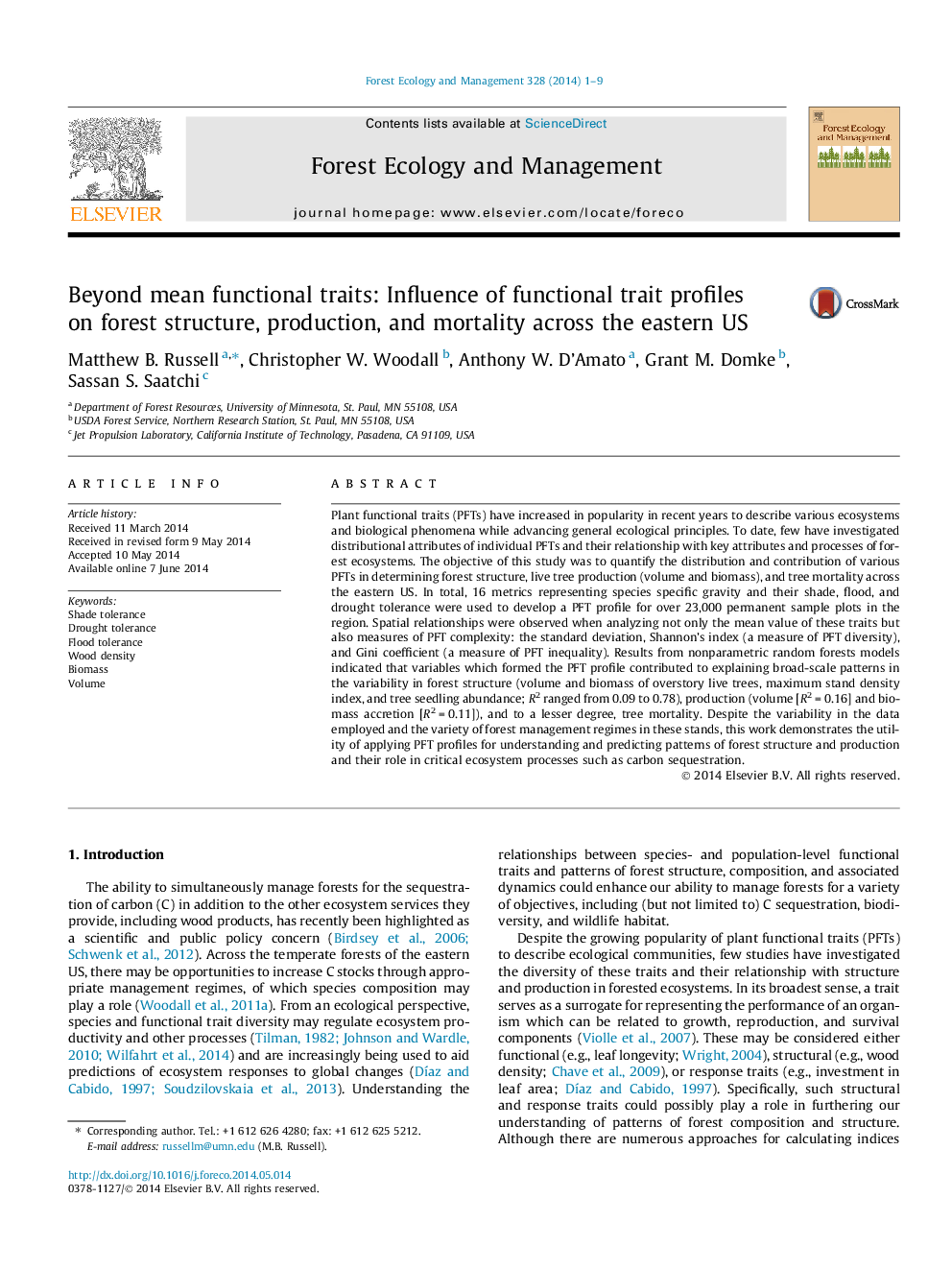| Article ID | Journal | Published Year | Pages | File Type |
|---|---|---|---|---|
| 86499 | Forest Ecology and Management | 2014 | 9 Pages |
•We investigate plant functional traits (PFTs) across the eastern US.•We quantify the mean, standard deviation, Shannon’s index, and Gini coefficient of PFTs.•Measures of PFT complexity were related to forest structure, production, and mortality.•A PFT profile could be used to aid in understanding forest ecosystem dynamics.
Plant functional traits (PFTs) have increased in popularity in recent years to describe various ecosystems and biological phenomena while advancing general ecological principles. To date, few have investigated distributional attributes of individual PFTs and their relationship with key attributes and processes of forest ecosystems. The objective of this study was to quantify the distribution and contribution of various PFTs in determining forest structure, live tree production (volume and biomass), and tree mortality across the eastern US. In total, 16 metrics representing species specific gravity and their shade, flood, and drought tolerance were used to develop a PFT profile for over 23,000 permanent sample plots in the region. Spatial relationships were observed when analyzing not only the mean value of these traits but also measures of PFT complexity: the standard deviation, Shannon’s index (a measure of PFT diversity), and Gini coefficient (a measure of PFT inequality). Results from nonparametric random forests models indicated that variables which formed the PFT profile contributed to explaining broad-scale patterns in the variability in forest structure (volume and biomass of overstory live trees, maximum stand density index, and tree seedling abundance; R2 ranged from 0.09 to 0.78), production (volume [R2 = 0.16] and biomass accretion [R2 = 0.11]), and to a lesser degree, tree mortality. Despite the variability in the data employed and the variety of forest management regimes in these stands, this work demonstrates the utility of applying PFT profiles for understanding and predicting patterns of forest structure and production and their role in critical ecosystem processes such as carbon sequestration.
